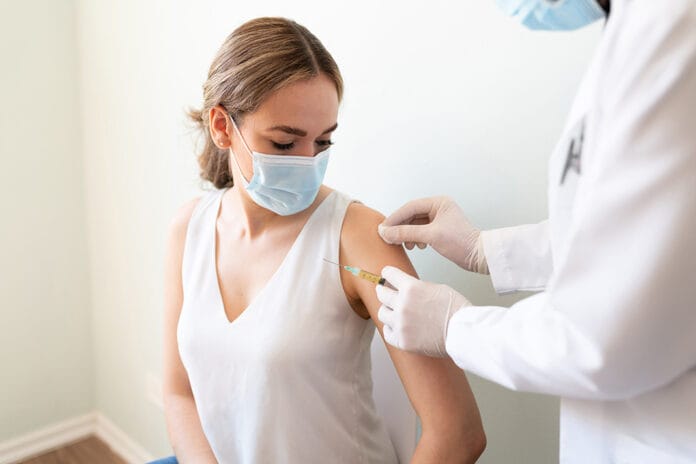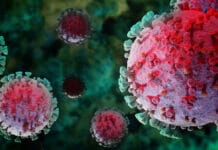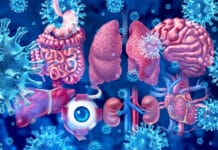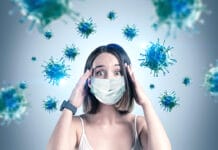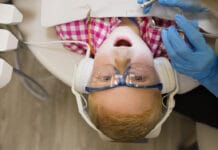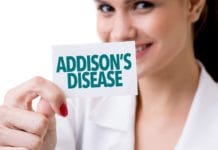We have all learned that working as a dental hygienist during a pandemic is stressful. Patients were canceling appointments quicker than my sister cancels her Fabletics account after using the two for $24 deal. Offices had to shift routines and form new comprehensive exposure plans. PPE was needed more than ever, but there was a national shortage of gloves and masks with the correct level of protection. Perhaps you were even active in the COVID-19 response, reporting cases, aiding in contact tracing, or administering COVID testing swabs.
Anterior nares testing became part of my daily duties as, at the time, as I was a community health hygienist for a Federally Qualified Health Center. Each patient was offered a chairside COVID-19 swab. Our organization played a crucial role in collecting data and results for our community. These findings were reported to state officials to aid in Montana’s reporting of COVID-19 exposures and illnesses.
We were all affected by this pandemic, some in bigger ways than others. Either way, holy molar, some days were just downright exhausting.
Early during the pandemic, I began a new relationship with an old friend, and the dates consisted of many video chats. The romance was holding steady at sea level, falling short of any Rocky Mountain highs. Eventually, the day came when we mutually agreed we wanted to see each other in person again. Over the summer, we spent weekends together social distancing on hiking trails and on his fishing boat.
One of us would make the three-hour commute every weekend so we could be together. Whenever I visited him, I worried that I had been exposed to my roommates, coworkers, or patients and that I was delivering COVID right to his door. When I would return home, I would worry that perhaps he had exposed me, and now I was bringing COVID back to my roommates, coworkers, and possibly patients.
It was a never-ending cycle of fear and anxiety, trying to maintain some semblance of a normal life while feeling completely paranoid every single day.
The Arrival of the Vaccine
Then came the vaccine. My company e-mailed us to notify us about their possession of the Moderna vaccine. I immediately responded, requesting to be one of the first in line. I was stoked. Getting the vaccine was a no-questions-asked, “Yes, for sure, I will get it.”
I received my first Moderna dose on December 23. I chose to get the vaccine in my left arm, which is my non-dominant arm. Following the injection, I was asked to stay for observation for 15 minutes. It didn’t take 15 minutes for me to realize that I wasn’t feeling well. The first symptoms I felt were tingling in my hands and forearms with a “heavy” feeling to my arms. Then came a brutal headache. I felt dizzy, tired, and disoriented.
Honestly, it was a similar feeling to having one too many margaritas. The injection site also burned on and off, like an iguana resting under a heat lamp. I stayed at the clinic and took some Aleve, drank a Capri Sun, and then got a ride back to the dental office. I saw one more patient and left work early.
My symptoms stayed throughout the evening, but my left arm didn’t feel as sore as I had anticipated. The burning subsided. When I woke up the next morning, I still had a headache. My arm was slightly sore but not uncomfortable. I dosed myself with a quick Tylenol-ibuprofen cocktail and managed to have an excellent Christmas Eve.
My second vaccination came on January 20. I got it in the right arm the second time, thinking that using my scaling arm and keeping it moving would prevent any stiffness the next day. By that evening, I had realized that I made a mistake and that this second dose was going to deliver a next-level smackdown. As the night hours ticked by, sleep continued to dodge my attempts to capture it. When I’d pivot to find a more comfortable position, my brain would punish me by delivering one-two jabs right behind my eyes and into my temples. My injection site shoulder would curse me out if I dared try to roll to my right side.
I could barely move my right arm the next day. I had cold sweats and a fever. I canceled travel plans for the day in favor of trying to get more rest. All of this took three whole days to wash over, and then on the fourth day, I felt sapped and ready for the Cat Nap Olympics. I also had developed the large, pink “COVID arm” rash experienced by a small number of Moderna vaccine recipients.1
Relief Despite the Side Effects
Despite the initial side effects, since receiving both doses of the Moderna vaccine, I have felt nothing but a huge sense of relief. I am comforted knowing that I am more protected, and in turn, my loved ones are more protected as well. My patients are more protected too.
Speculation and negativity, though, have surfaced about the safety and efficacy of the vaccine. I have heard suspicions questioning the science behind the vaccine. People will latch onto any story, whether true or false, as long as it fits into their narrative ─ confirmation bias at its finest. Throughout all of this COVID-19 vaccine tsunami of craziness, I have kept one person close to mind: Edward Jenner.
Edward Jenner was an English scientist who is credited for developing the first vaccine. Jenner was motivated, curious, and studied under biologists, geologists, doctors, experimental scientists, whoever could satiate his desire for knowledge.
It was Jenner who observed that dairymaids were not afflicted with smallpox, a disease with a 30% mortality rate that left the survivors scarred and permanently disfigured. These milkmaids had didn’t have smallpox. They had cowpox, and Jenner believed that the biology of cowpox is what protected these women from the contagious smallpox virus.
To test this theory, Jenner took a sample of a milkmaid’s cowpox lesion and inoculated a nine-year-old boy with the biological material. The boy was sick for days but eventually recovered. Jenner inoculated him again a couple of months later with matter from a fresh smallpox lesion. The boy, James Phipps, never developed smallpox. The first vaccine was born.2,3
The COVID-19 vaccine has been distributed to health care providers and our elderly communities, and it will soon become available to any United States citizen who chooses to receive it. Immunity to COVID-19 can be successful through three vaccine types: mRNA vaccines, vector vaccines, or protein subunit vaccines. All three of these vaccines use different science, but they trigger the exact same immune-building response. Our immune system’s bodyguards, macrophages, circulate through our bloodstream and attack the COVID mRNA, vector, or protein. The antigens of the COVID-19 particles alert B-lymphocytes to create antibodies specifically assigned to patrol and attack the pieces of COVID-19 left by the macrophage attack (or as my A&P instructor would call it, the “Mac Attack!”).
Meanwhile, T-lymphocytes are morphing into memory cells that will capture “snapshots” and records of COVID-19. If there are any future COVID-19 exposures, the immune response will be acute, and the body will know exactly who the invader is and how to be rid of it. I like to think of these guys as being the body’s Coast Guard of veteran warriors.4
Edward Jenner was rejected when he published his findings, and he was labeled a nut job. It took years before anyone gave him credit for curing smallpox.1 It seems to be our nature as humans to greet great brilliance with great skepticism. We are untrusting and cynical.
Supporting Vaccination Efforts
As health care providers, we have the education to support science and to support the truth. It is our responsibility to present facts to the public and try to call on the lessons we learned in our microbiology and physiology courses. People are skeptical of this vaccine, just as they were in the past of Jenner’s vaccine, but science has stayed constant. These vaccines’ foundation had remained the same since 1796 when Jenner inoculated James Phipps until the present day with our COVID-19 vaccines. The fact that this science is still being used in vaccine immunity is amazing and something we can take comfort in and believe in.
Moving forward, we will certainly hear more theories, suspicions, and personal opinions surrounding the virus and vaccine. Some of these ideologies are born out of fear, from social media, the local rumor mill, or just because someone’s grandpa thinks the vaccine is sketchy, and therefore they do too.
I believe it is important to remember that the signs are variable, but the symptom of these beliefs is a lack of proper education. When patients express their opinions or frustrations to us, they are providing us with an opportunity to educate because we didn’t just go to school to be “pickers and flickers.” We also studied to become health care educators.
Though not about the vaccine, here’s an example of a conversation about wearing masks and the frustrations bubbling forth during the pandemic. When I was still with the FQHC, one of my patients came back to my op with his mask askew and improperly placed in a chin wedgie under his bottom lip. I greeted the patient, and he replied with a statement too inappropriate for me to repeat.
He proceeded to shed his frustrations with the pandemic on me. With my pulse pounding in my ears and my heart breakdancing in my ribcage, I explained to him that I understood his frustrations, but if he was going to be unpleasant and use foul and inappropriate language, he could excuse himself from our clinic.
This seemed to snap the patient into the reality of where he was staging his performance. He agreed to behave, and I pretended he hadn’t just thrown a pre-prophy temper tantrum. After polishing and flossing, I sat the patient up, and he gave me kudos for having a backbone and not putting up with his poor behavior.
I gently emphasized to the patient that our office safety measures weren’t about violating individual rights or freedoms, or to create inconvenience or discomfort; they were in place to protect our vulnerable patients, whom I cared for and felt a duty to protect. He told me that the masks don’t provide protection from the virus, and I firmly stated, “Yes, they do.” The patient apologized and put his mask back on the correct way before he left.
I felt like Rocky Balboa defeating Ivan Drago.
In Closing
If we approach these confrontations with the facts, keep our footing, and use our knowledge as our base, we will be able to maneuver through them successfully. Responding to those who are different from us with compassion and understanding isn’t just a proper clinician’s response; it’s an appropriate way to interact as one human being to another.
Just as humans overcame the bubonic plague, the Spanish flu, and yes, even smallpox, we too will overcome COVID-19. One day our daily lives will resemble what they once did in the pre-COVID era. My only hope is that we emerge from this pandemic as a society with a better understanding of virology, vaccines, and biology with the power to change the world.
Need CE? Click Here to Check Out the Self-Study CE Courses from Today’s RDH!
Listen to the Today’s RDH Dental Hygiene Podcast Below:
References
- Krstic, Z. (2021, March 15). How to Treat ‘COVID Arm’ Rash or Pain Side Effects, According to Experts. Good Housekeeping. Retrieved from https://www.goodhousekeeping.com/health/a35823752/covid-arm-rash-pain-vaccine/
- Riedel, S. Edward Jenner and The History of Smallpox and Vaccination. Baylor University Medical Center Proceedings.2005 Jan; 18(1): 21-25. Retrieved from https://www.ncbi.nlm.nih.gov/pmc/articles/PMC1200696/
- History of Smallpox. (2021, February 21). Centers for Disease Control and Prevention. Retrieved from https://www.cdc.gov/smallpox/history/history.html
- Understanding How COVID-19 Vaccines Work. (2021, March 9). Centers for Disease Control and Prevention. Retrieved from https://www.cdc.gov/coronavirus/2019-ncov/vaccines/different-vaccines/how-they-work.html

